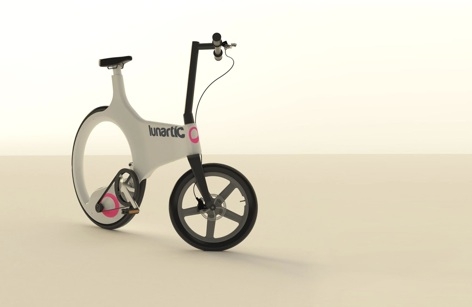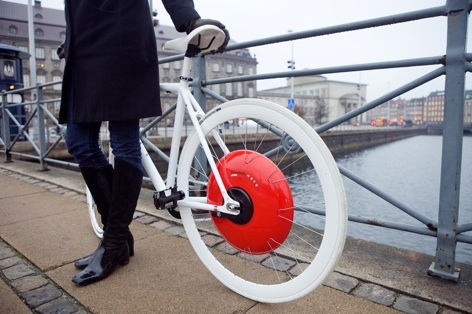With the rise in popularity of urban cycling, engineers in the UK and US are promoting new bike concepts they say are better equipped for navigating city streets.
The teams from the UK and US are competing in the international James Dyson Award for engineering design, according to the short listed projects announced earlier this month.
It remains to be seen whether either will make the final list, which will be released in mid-September. The international winner will be announced here on 5th October.

While the UK’s concept aims to increase bike stability and maneuverability with different sized wheels, the US cycle is built with a regenerative technology that stores energy every time the rider puts on the brakes.
The UK bike, called the Lunartic, is designed with a large back wheel which provides a gyroscopic effect, helping cyclists travel faster and keeping more contact with the road. This, its designer says, ensures a more stable and comfortable ride. The smaller front wheel gives the bike more maneuverability.
An interesting touch is the wheel at the back is hubless and it’s driven by a toothed track inside the wheel. According to the designer, ‘Moving the working parts back, inside the rear wheel shortens the wheel base but maintains large wheel performance and there is no sacrifice to conventional geometry.’
It also creates a new space, the designer adds, and an intriguing aesthetic.
Across the pond in the US, a small team of students at the SENSEable City Lab at MIT are presenting the ‘Copenhagen Wheel’ as a new way to transform existing bicycles into hybrid electric-bikes with regeneration and real-time sensing capabilities.
The rear wheel contains a sleek red hub that contains a motor, batteries and an internal gear system. This system stores energy every time the rider puts on the brakes, and then gives that power back to provide a boost when going uphill or to add a burst of speed in traffic. The boost power essentially makes it easier for riders to pedal.

As reported in The Engineer in December last year: ‘There are also a variety of extra functions hidden within the hub of the new wheel, which is designed to be easily interchangeable with any standard bicycle’s rear wheel.
‘By using a series of sensors and a Bluetooth connection to the user’s iPhone, which can be mounted on the handlebars, the wheel can monitor the bicycle’s speed, direction and distance.’
The MIT students plan on spinning the technology out of a university environment so that it is ready for market in approximately 12 months time with an estimated cost of $600 per wheel.
https://www.youtube.com/watch?v=S7y3qIQu3Gc




Nanogenerator consumes CO2 to generate electricity
Whoopee, they've solved how to keep a light on but not a lot else.